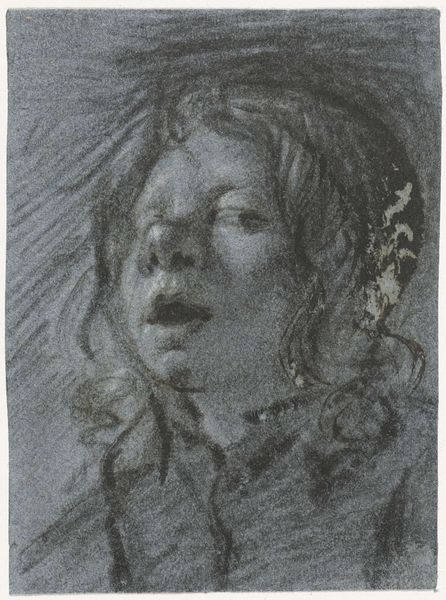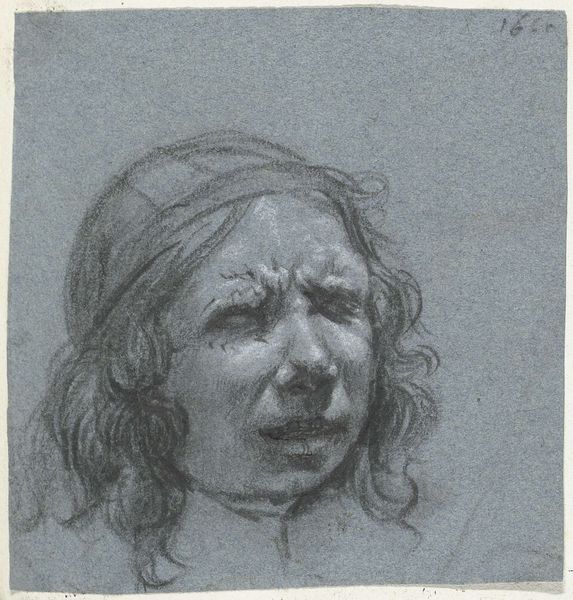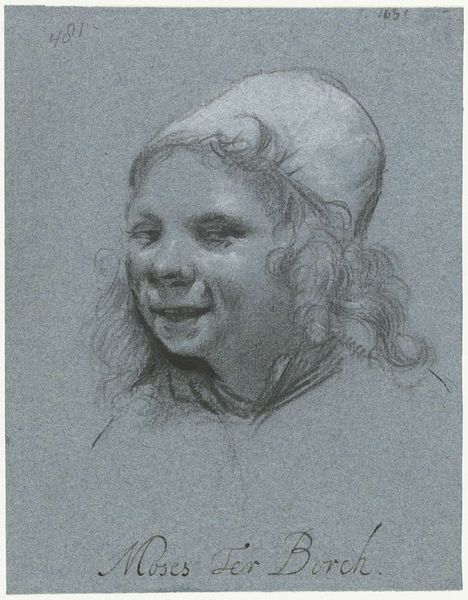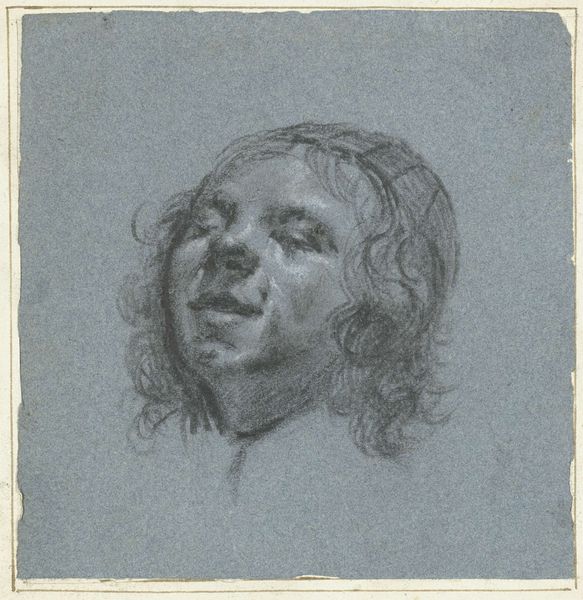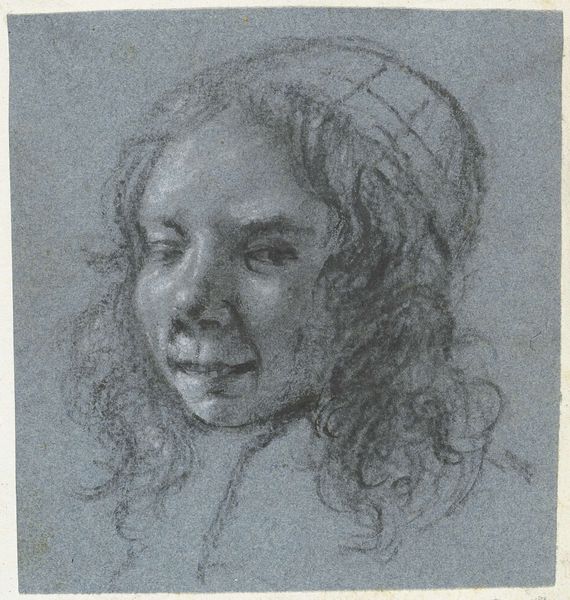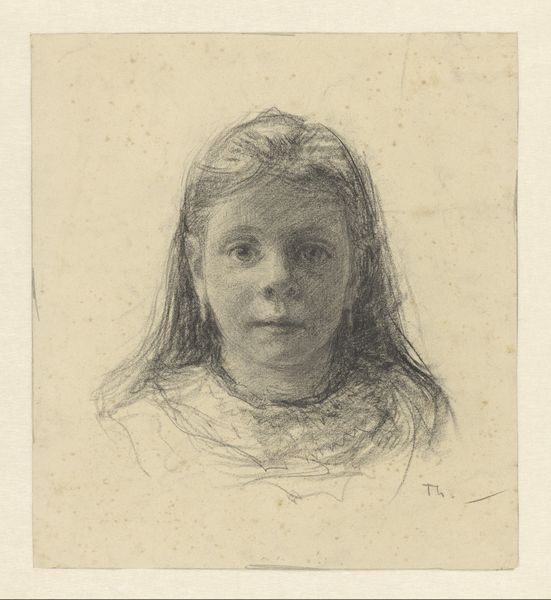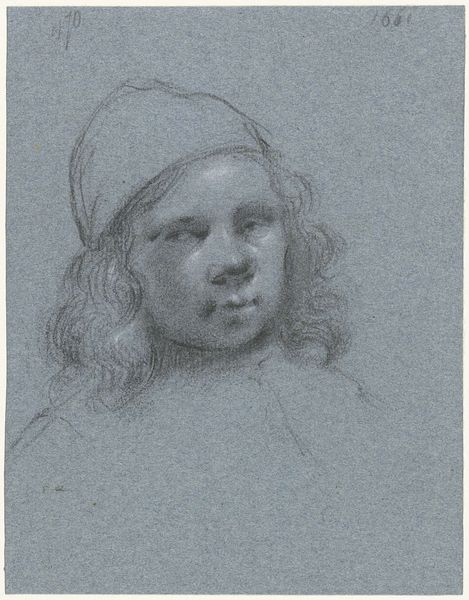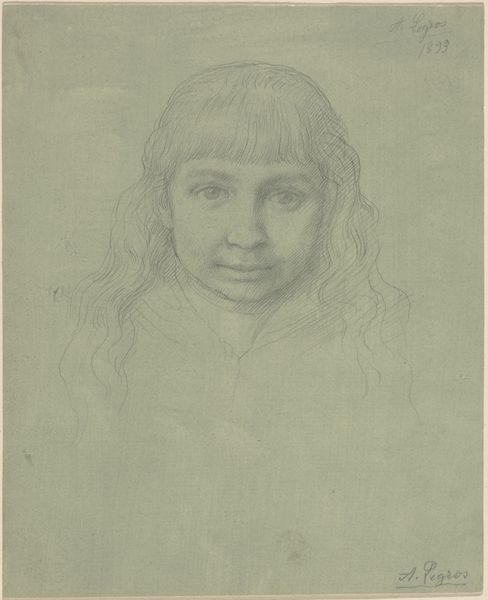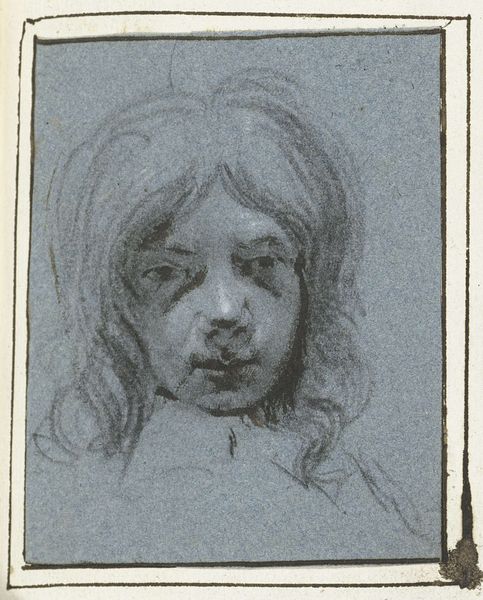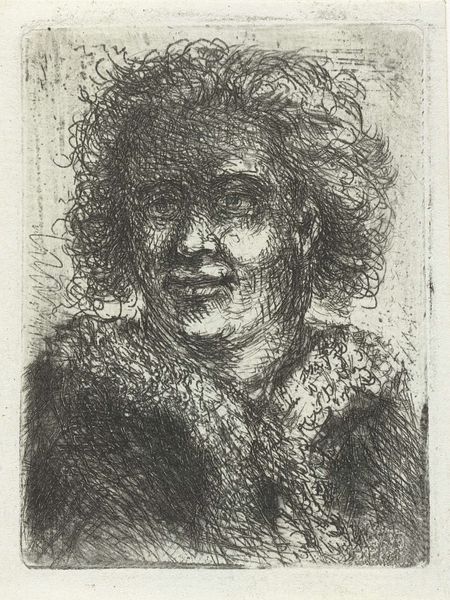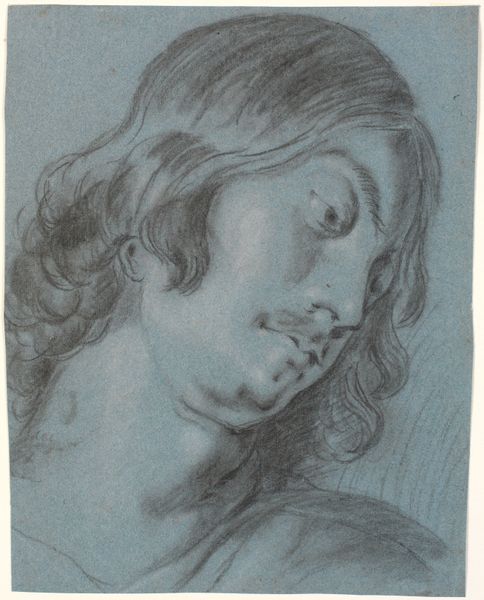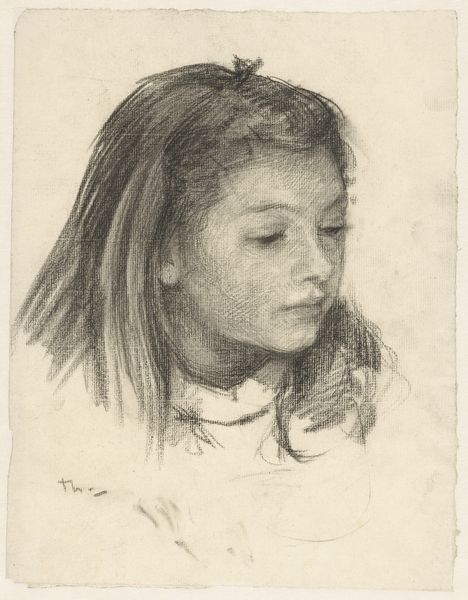
drawing, charcoal
#
portrait
#
pencil drawn
#
drawing
#
self-portrait
#
dutch-golden-age
#
pencil sketch
#
charcoal drawing
#
figuration
#
charcoal art
#
pencil drawing
#
portrait drawing
#
pencil work
#
charcoal
#
realism
Dimensions: height 93 mm, width 72 mm
Copyright: Rijks Museum: Open Domain
This self-portrait in black chalk by Moses ter Borch, around 1665, captures a fleeting smile. But what does this smile convey, and how does it echo through the ages? The smile, seemingly simple, is a potent symbol. Think of the archaic smile on ancient Greek statues—a sign of vitality, life, and perhaps a hint of divine detachment. Here, Ter Borch's smile is less aloof, more intimate. Yet, it resonates with those earlier expressions, revealing how the human face, even in a momentary expression, carries cultural memory. Consider the Mona Lisa, whose enigmatic smile has captivated viewers for centuries. Is it happiness, secret knowledge, or something else entirely? Like Leonardo's masterpiece, Ter Borch's self-portrait engages us on a deeply psychological level, inviting us to ponder the complexities of human emotion. The cyclical progression of this symbol has resurfaced, evolved, and taken on new meanings in different historical contexts.
Comments
rijksmuseum about 2 years ago
⋮
Moses ter Borch was one of the few artists in the second half of the 17th century who, inspired by Rembrandt’s self-portraits, frequently studied his own face. The young artist recorded himself with different expressions in these three studies. Thus he is not looking out at us, but rather examining his reflection in a mirror.
Join the conversation
Join millions of artists and users on Artera today and experience the ultimate creative platform.
